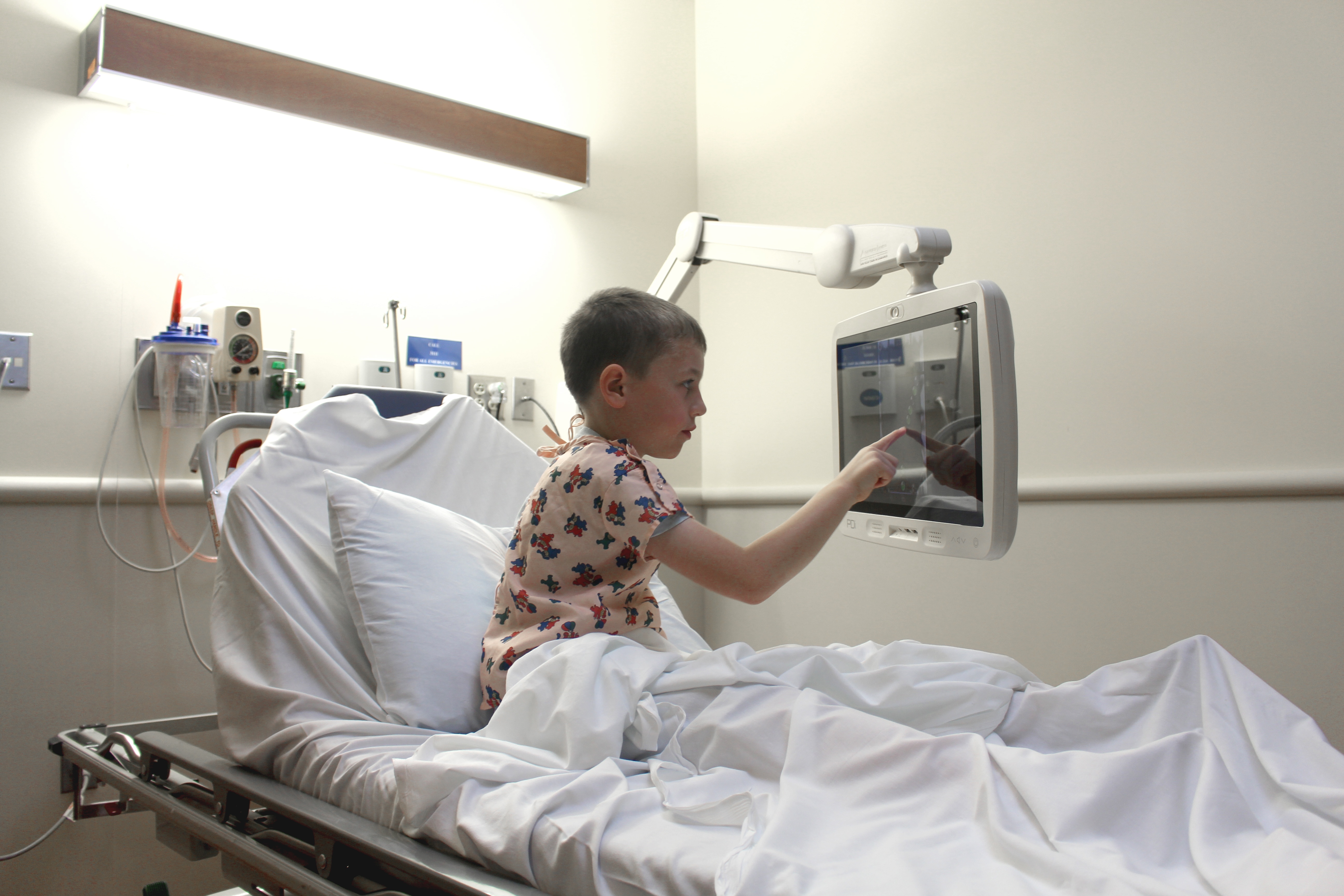How Arm-mounted Bedside TVs Increase Patient Engagement
Part 3 of "Different Angles of Patient Engagement" Blog Series Previously, we discussed the experience of a large-screen footwall patient TV and ...

Recently, AI tools like ChatGPT and Bard have received a lot of media attention because of their intuitive and high-speed capabilities. With it being more competitive than ever for businesses to rank on search engines and stand out from the crowd, more and more marketers are turning to chatbots to assist them with producing engaging and SEO-optimized content.
Because of its growing popularity, PDi decided to give ChatGPT a try. Our goal was to create a blog post comparing and contrasting healthcare arm TVs vs wall TVs. We asked ChatGPT to keep the blog post under 1,000 words.
Below are our thoughts, as well as the original response from the chatbot.
.jpg?width=1920&height=1080&name=business%20hand%20robot%20(2).jpg)
There were two main takeaways we noticed after reviewing ChatGPT’s blog post, described below.
Although we were impressed by ChatGPT’s ability to quickly generate well-written content, there were several instances where the chatbot provided incorrect or misleading information. For example, under “pros” for arm TVs, the blog notes that arm TVs don’t take up any floor space…this is misleading because it depends on the type of mount used. While a major benefit of arm TVs is that they can be attached to headwalls, cabinets, or ceilings to open up floor space, they can also be attached to floor mounts. They’re flexible to the type of patient space being worked with.
Another instance of inaccurate information can be seen under “cons” for arm TVs. The article suggests that arm TVs provide limited viewing because they can’t always be adjusted to the patient’s preferred angle, however, this is incorrect. Arm TVs are specifically designed to be flexible and easy for patients to move, so naming this as a con doesn’t make sense.
There are several other examples of incorrect information present throughout the blog, which we’ve highlighted in red below. The high prevalence of inaccuracy leads us to believe that ChatGPT didn’t have enough comprehensive information on the subject.
Another trend we noticed was ChatGPT’s limited vocabulary usage. There were a few times throughout the article when the chatbot’s wording was redundant or failed to expand upon a point (highlighted below in blue). One example of this can be seen under “pros” for arm TVs. The first bullet point, flexibility, discusses how arm TVs can be moved around the room to accommodate patients. Not only is this inaccurate (swing arms can’t physically move around the room because they are mounted) it’s almost the exact same wording used in the introductory paragraph above it, with hardly any elaboration.
In addition to using similar sentences throughout the article, ChatGPT also seemed to have favorite words. For instance, the word “costly” is used three times throughout the blog, and the instances occur close together. Instead of using synonyms like “expensive” or “pricey”, ChatGPT stuck with the same word each time, making for a repetitive read. Another example of this is the word “limited mobility”, which appeared twice within three bullet points.
Although ChatGPT possesses incredible capabilities and can be a real timesaver for generating content, there are a few limitations marketers should be aware of. In our experience, ChatGPT can generate inaccurate, limited information. Because of this, we suggest that marketers use ChatGPT as a tool to provide a rough draft, which is then reviewed, fact-checked, and expanded on by a writer.

Hospitals can be stressful environments for patients and their loved ones. Adding a television to a hospital room can provide a welcome distraction and source of entertainment during an otherwise difficult time. When deciding between an arm TV and a wall TV, there are several factors to consider. In this blog post, we'll explore the pros and cons of both options in a hospital setting.
An arm TV is mounted on an adjustable arm that can be moved around the room to accommodate different viewing angles. Here are some of the advantages and disadvantages of using an arm TV in a hospital room:
Pros:
Cons:
A wall TV is mounted directly onto the wall and is a more permanent fixture in the room. Here are some of the pros and cons of using a wall TV in a hospital room:
Pros:
Cons:
Ultimately, the decision to use an arm TV or a wall TV in a hospital setting will depend on the specific needs of the patients and caregivers. If space is a concern or patients require adjustable viewing angles, an arm TV may be the best choice. On the other hand, if safety and security are top priorities or patients require a fixed viewing angle, a wall TV may be the better option.

Part 3 of "Different Angles of Patient Engagement" Blog Series Previously, we discussed the experience of a large-screen footwall patient TV and ...

Having worked at PDi as the Service Manager for over 13 years, it’s been a long time since we began discussing IPTV, Internet Protocol TV, as a real...

In recent years, the applications of artificial intelligence have surged, revolutionizing various industries to be more efficient and effective, and...